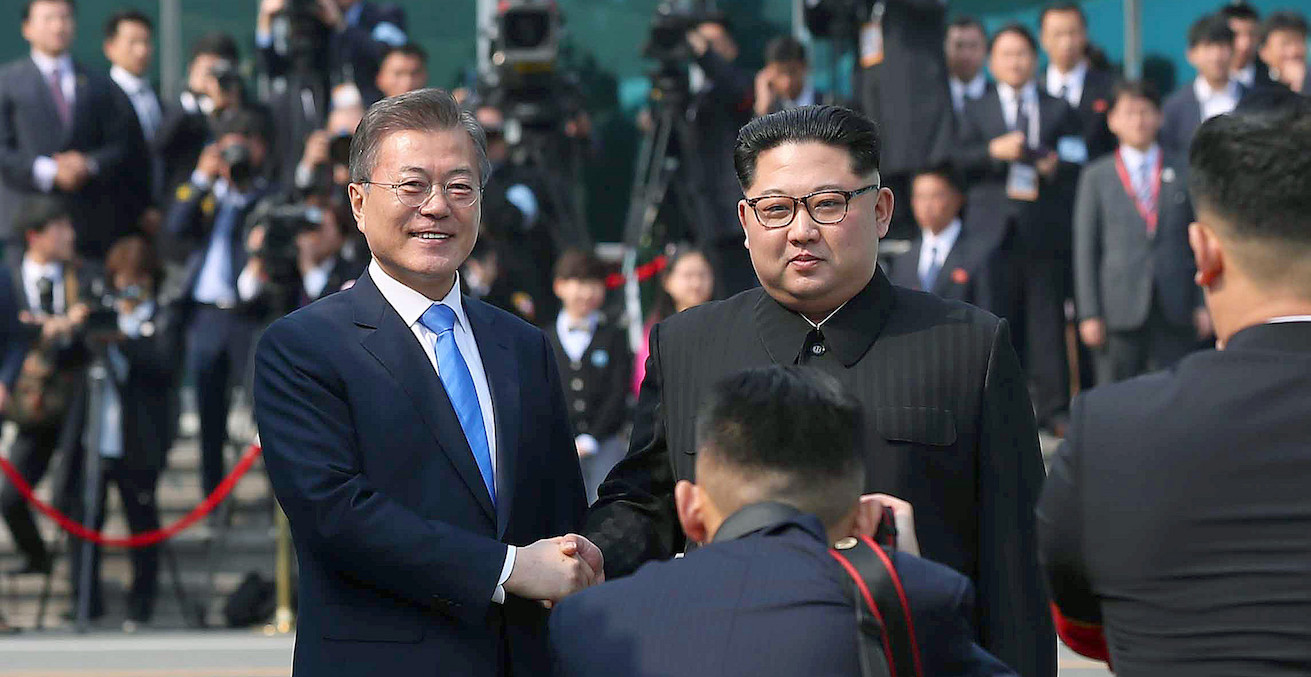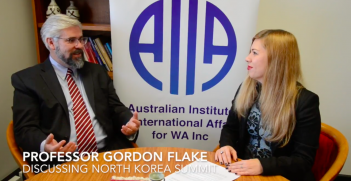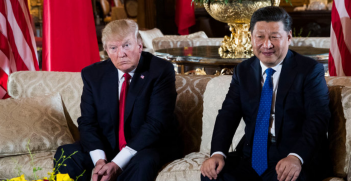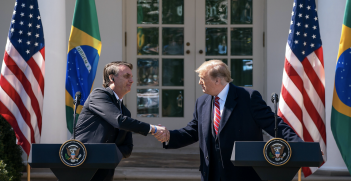What Australia Can Learn From South Korea

Australia and South Korea are Asia-Pacific middle powers with much in common. South Korea’s activist diplomacy offers Australia an instructive point of comparison as it navigates the uncertainties of the Trump era.
According to the Lowy Institute, Australia and South Korea are the sixth and seventh most powerful states in the Asia–Pacific. These middle powers have much in common, such as their alliances with the United States, but they have diverged in their responses to the Trump administration’s transactional foreign policy.
Facing up to the Trump challenge
Sarah Teo argues that otherwise similar societies may well react differently to the same challenges. Australia has a strong preference for, and emotional investment in, the postwar rules-based order. Australia’s 2017 Foreign Policy White Paper prioritised the preservation of the rules-based order, and the maintenance of stability in the Indo-Pacific region. Hugh White, however, claims that the era of US leadership is coming to an end, and that the White Paper doesn’t reflect these new realities. A recent decline in Australians’ trust in the US must also concern foreign policymakers. And yet since Trump’s inauguration, Australia has attempted to reinforce the status quo, which it sees as beneficial to its own interests and those of other societies.
South Korea, by contrast, has been a beneficiary rather than a founder of the liberal international order. Its foreign policy has emphasised its ‘bridging role’ between the developed and developing worlds. South Korea has therefore quietly critiqued the rules-based order and sought to improve upon it. In response to signals that under Trump the US would play a less prominent role in world affairs, President Moon Jae-in has signalled the intention to enhance South Korea’s independence. Speaking in Berlin last July, Moon reaffirmed that the US remained central to South Korea’s interests. He said that the region needed to ‘dismantle the Cold War framework on the Korean Peninsula’, and called for the ‘complete, verifiable and irreversible dismantlement’ (CVID) of North Korea’s nuclear program. He also told his US allies that there would be no use of military force against North Korea without South Korea’s approval.
Previous governments have tended to defer to the lead of the larger powers, especially the US, but Moon has signalled his intention to take the lead. That North Korean leader Kim Jong Un has attended three high-level summits in the past two months with his South Korean and US counterparts is due almost entirely to Moon’s activist leadership. The Trump Administration seems willing to let Moon’s vision of CVID – that is, a more gradual shift towards first de-escalation and then a phased reduction in North Korea’s nuclear arsenal – rather than the ‘one-shot’ deal that was mooted before the Singapore summit.
Reassessing relations with China
Australia and South Korea also differ in their attitudes towards China, although both have been on bad terms with the rising power. Australia has attempted to shore up the US alliance, even at cost of strains to China ties. South Korea, meanwhile, has been less confrontational. Australia has generally been in favour of the Quadrilateral Security Dialogue or ‘Free and Open Indo-Pacific’ initiative, but South Korea has been much warier. It sees little to be gained from entering into any arrangement that China may perceive as encirclement.
Australia’s political ties with China are ‘close to a 10-year low’ due to concerns about China’s ‘interference’ in domestic politics. China has responded by freezing ministerial-level meetings. Australian business leaders fear that there will be an economic price to pay for this estrangement from China. These fears may be informed by China’s retaliation against South Korea in 2017. China objected to the outgoing Park Geun-hye government’s decision to install the Terminal High-Altitude Aerial Defence (THAAD) system, mainly because its accompanying X-band radar system is capable of monitoring the movement of missiles and aircraft within not just North Korea but as far away as China itself. China retaliated by punishing the Lotte Corporation (which sold the land on which the THAAD system was built), and by vastly reducing the number of Chinese tourists who were permitted to visit South Korea.
South Korea has sought greater autonomy from China, while also avoiding outright confrontation. Polls have detected growing interest – if not consistent majority support – for developing tactical nuclear weapons, and for entering into a trilateral alliance with Japan and the US. The Moon Government opposes both suggestions, but the fact that they are being seriously debated is an indication of the level of disquiet about China’s perceived threat to South Korea. Furthermore, Moon has expressed interest in joining the Trans-Pacific Partnership (TPP), which could reduce South Korea’s economic reliance on China. The government has forged closer ties with Southeast Asia, through its ‘New South-bound Policy’. South Korea has signed a strategic partnership with Indonesia, and it has strengthened ties with Vietnam, another mid-ranking regional state with sometimes-difficult relations with China.
Finally, South Korea’s level of regional engagement has been much greater than Australia’s. Moon has met his counterparts from China, the United States, Japan and North Korea twice each since December last year, in addition to meetings with the leaders of Vietnam and the Philippines. In the same period Australian prime minister Malcolm Turnbull has met President Trump and hosted a meeting with the ASEAN leaders.
What Korea can teach us
The postwar liberal order has served Australia well, so its foreign policy priority is to preserve the status quo. The Trump era has been a psychological shock to Australia, which has demonstrated little of the creativity that typified earlier eras of middle-power diplomacy.
South Korea’s foreign policy, in contrast, has been imaginative and proactive, as Moon’s summits with his regional counterparts illustrate. Of the two middle powers, South Korea is coping better in the Trump era. Moon’s bold ventures illustrate the value of not waiting for the great powers to act. They should serve as a salutatory lesson to Australia of what a little imagination can achieve in foreign policy, even in uncertain times.
David Hundt is an Associate Professor of International Relations at Deakin University, and researches a wide range of Korea- and Asia-related topics. He has been appointed co-editor of the next volume of Australia in World Affairs to be published by AIIA in 2021.
This article is based on his remarks at the ANU symposium on 15 June 2018 titled “Korea-Australia Relations during a Time of Transition” held by the Embassy of the Republic of Korea in collaboration with the ANU Korea Institute.
This article is published under a Creative Commons Licence and may be republished with attribution.





